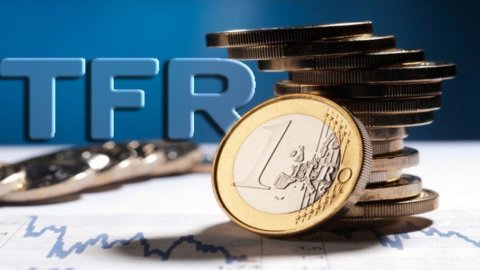Experimentation starts next week Tfr in paycheck. Only the employees in the private sector (provided they have a contract for at least six months), who will have to present the form to their company Qu.IR, acronym for "Share to be accrued of severance pay as a supplementary part of the salary", and have the authorization of INPS.
The workers will thus obtain the accrued monthly payment from 2015 March 30 to 2018 June XNUMX. Payment will begin from the month following that of the request in companies with more than 50 employees and three months later in those with fewer than 50 employees (the latter can access a guaranteed bank loan from only one credit institution).
The choice is free and can happen at any time within the period of time foreseen for the experimentation of the measure. Afterthoughts, on the other hand, are forbidden: whoever starts is obliged to continue until the end, in three years and three months. The portions of severance pay that will arrive in the paycheck will naturally no longer be set aside for the purposes for which they were previously intended (liquidation or financing a pension fund).
as to taxation, will take place with the ordinary personal income tax rates, higher than the subsidized tax regime envisaged today for the severance indemnity. However, as emerges from the calculations of the Employment Consultants Study Foundation, in fiscal terms nothing will change for workers with an annual gross income of up to 15 thousand euros, because in their case the Irpef rate and that of the TFR coincide (23%) .
Once the threshold of 15 thousand euros has been exceeded, however, anticipating the severance indemnity involves increases, even if for the second income tax bracket the burden is minimal. Here is the scheme:
- From 15 to 28.650 euros of income (IRPEF rate at 27%) taxes increase by about 50 euros.
- From 28.650 to 55 thousand euros of income (IRPEF rate at 38%) the increase is approximately 300 euros.
- From 55 thousand to 75 thousand euros of income (IRPEF rate at 41%) the expected increase is around 500 euros.
- Over 75 thousand euros of income (IRPEF rate at 43%) anticipating the severance indemnity will result in a tax burden of just under 600 euros.
In addition, the payroll settlement will affect the deductions for employment or dependent family members, but not on the calculation of income for the granting of €80 bonus, nor for the purposes ofsocial security taxable.
The categories that they can not requesting the severance pay in the pay slip are as follows:
– employees of the agricultural sector;
– domestic employees;
– employees in service in production units under extraordinary layoffs;
– employees of companies subject to insolvency and bankruptcy proceedings or debt restructuring;
– workers who have used the severance pay accrued to guarantee a bank loan.
Il Council of State gave the go-ahead to the decree on severance indemnity in pay slips, however expressing some perplexities about the stability of the social security system (since the new measure weighs on one of the elements that should guarantee the livelihood of future pensioners in the era of the contributory system), on the possibility of additional costs for businesses and on excluded categories (due to possible unequal treatment).





